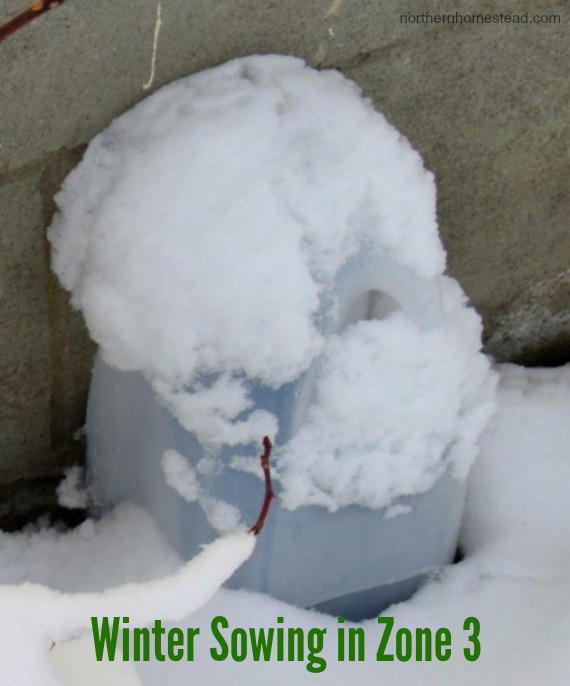
Winter Sowing Seeds in a Cold Climate (Zone 3). Winter sowing is a way to start seeds outdoors in a small container greenhouse while it is still winter. Since the most common containers are used milk jugs, it is also sometimes referred to as milk jug sowing. It was first invented by Trudi Davidoff. It sounds so good that one wonders if it can be true. You will never know if you do not try it, so we did.
I did not doubt the system; it sure sounds possible. Seeds will germinate whenever it is natural for them, and we can trust Mother Nature. In zone 3, however, that time might come way too late since winter in a cold climate does not have good candidates for seed germination. Still, we did try it out hardcore, and here are our first results.
This blog post includes detailed instructions about winter sowing in Zone 3. Our experience has also shown that using winter sowing in combination with indoor outdoor or a greenhouse works even better in a cold climate. In our short growing season, we want to start with vigorous seedlings on time to get the best results.
Zone 3 refers to the plant hardiness zone in our area, where winter temperatures can reach -40 degrees.
Why use winter sowing to start seeds
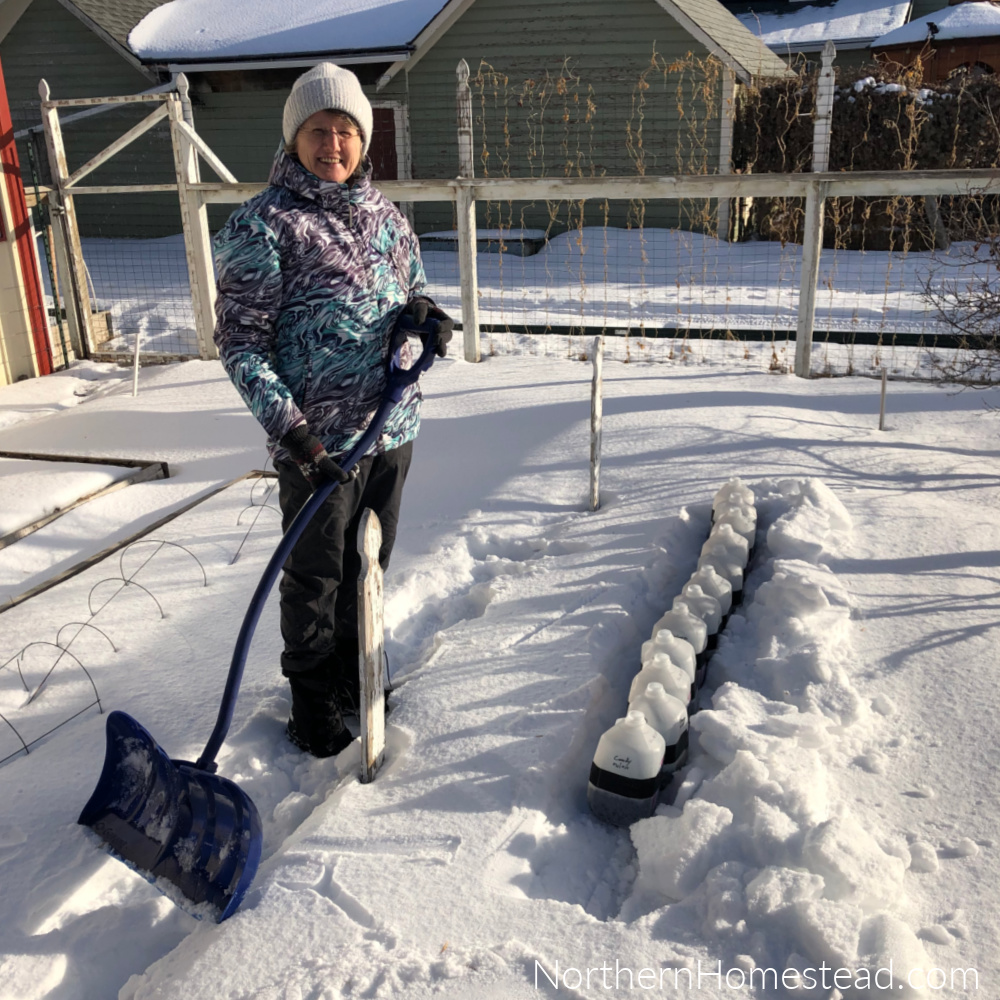
Winter sowing is a great way to start seeds without a growing room, grow lights, or greenhouse. If your indoor conditions are not optimal for seed starting, consider winter sowing.
We use recycled plastic containers (gallon jugs) for winter sowing, reducing seed start costs. It is a great method for gardening on a budget.
Winter sowing makes seed starting easy, requires less care, and requires less work to harden off plants. However, some care and hardening are also needed here.
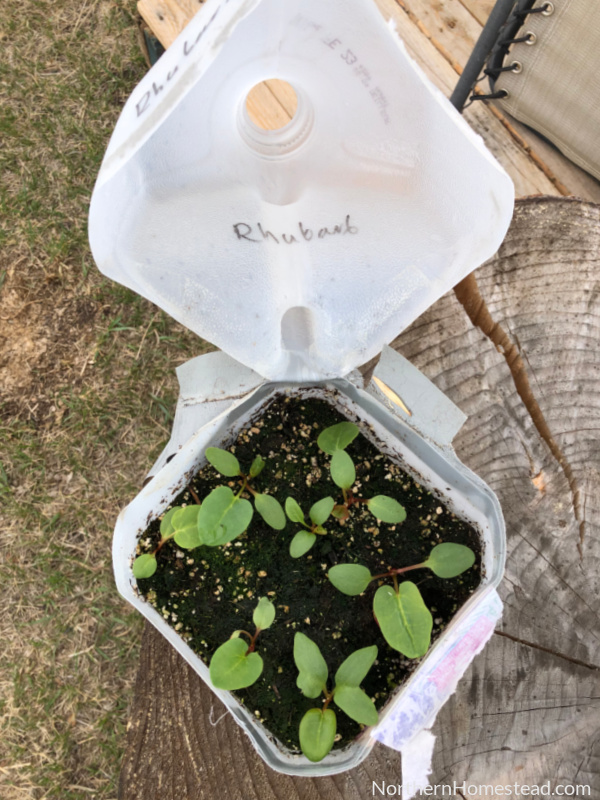
Winter sowing is especially good for seeds that need a cold stratification time. For perennial flowers, native perennials, and cold, hardy annuals. If you do it right, winter sowing produces more robust seedlings.
What seeds to start in winter sowing

Winter sowing does not have any magic to it. What we do here is create a somehow sheltered environment to let seeds germinate whenever the conditions for that seed are right.
So, if a plant variety germinates under cooler conditions, that seed will germinate earlier. If a plant variety needs warm soil, that seed will germinate later.
In our experience in a cold climate, only cold-hardy seeds germinate in time to make it worth it. The little container greenhouse is not able to create an environment for heat-loving plants if the outdoor temperature is too cold.
Winter sow perennials, native plants, hardy greens like kale and Swiss chard, and cabbage family plants. A good rule of thumb is that early spring outdoor planting can be started in winter sowing for whatever seeds the seed packet suggests. Tender annuals can also be planted, but here, it is advised to start later and use a combination with other systems like a cold frame or greenhouse. We talk about that more later.
Onions are a great combination crop to start with winter sowing. They require warm temperatures for germination but cooler temperatures for growth. Learn more about winter sowing onions here.
Even tomatoes do well in winter sowing if they are kept indoors for germination and brought in during cold spells.
When to start seeds in winter sowing in zone 3
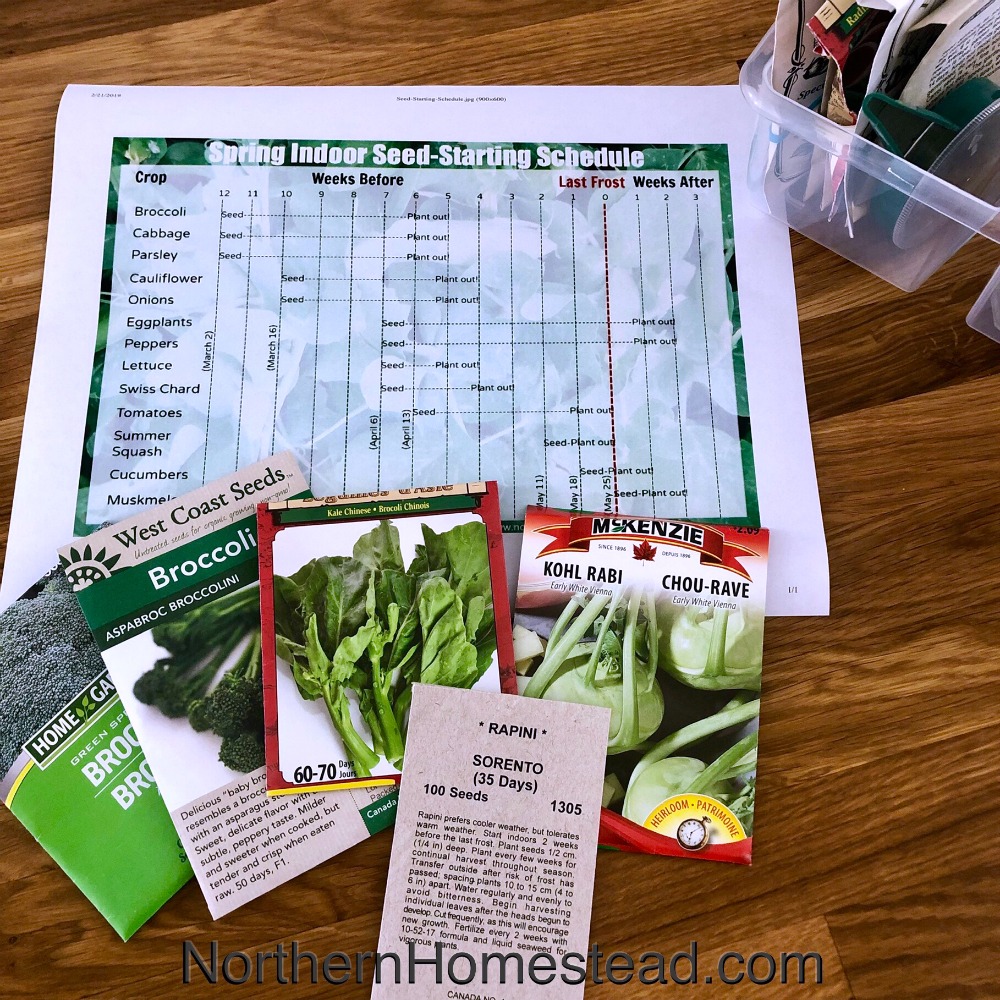
The whole idea of winter sowing is that it can be done in the middle of winter and will work. This is true for a tempered climate. Any seed that would naturally survive being frozen and then germinate would work for winter sowing in Zone 3, also.
We have all seen hollyhocks, dill, cilantro, and other plants emerge in spring after a long, cold winter. Winter sowing is the same idea, just more controlled. Since we create a small microclimate, the seeds will emerge a bit earlier.
That said, -40 degrees is hard on the containers and may damage some seeds. There is no need to expose them to it. The seeds will not come up any earlier if we start them in winter sowing earlier (around the winter solstice). They will come up when the soil reaches the minimum temperature required for the types of seeds planted.
We wait until early March, which is plenty of time. Mid- to late February is a good time to start hardy perennials.
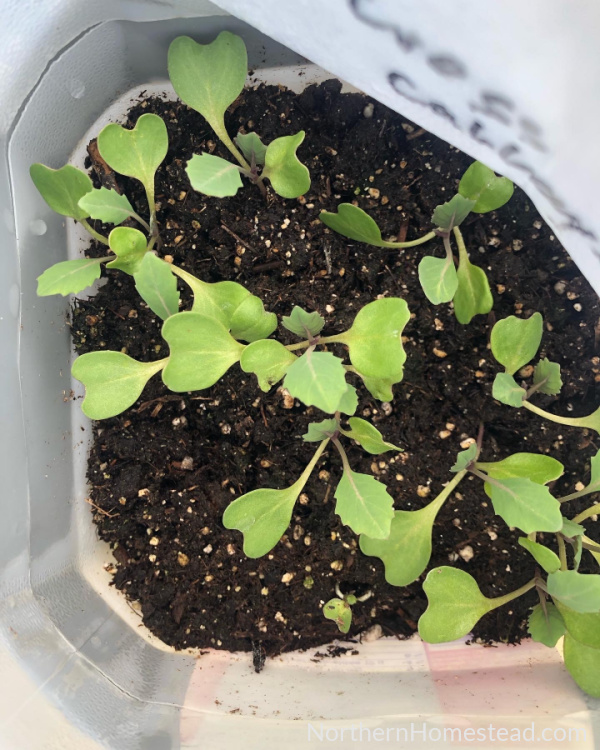
In winter sowing, we are aiming for young, healthy seedlings. For the most part, in zone 3, it seems to be a good idea to go with the same seed starting schedule we use for indoor seed starting. You can find a free printable schedule here.
Prepare the Milk Jag container greenhouse
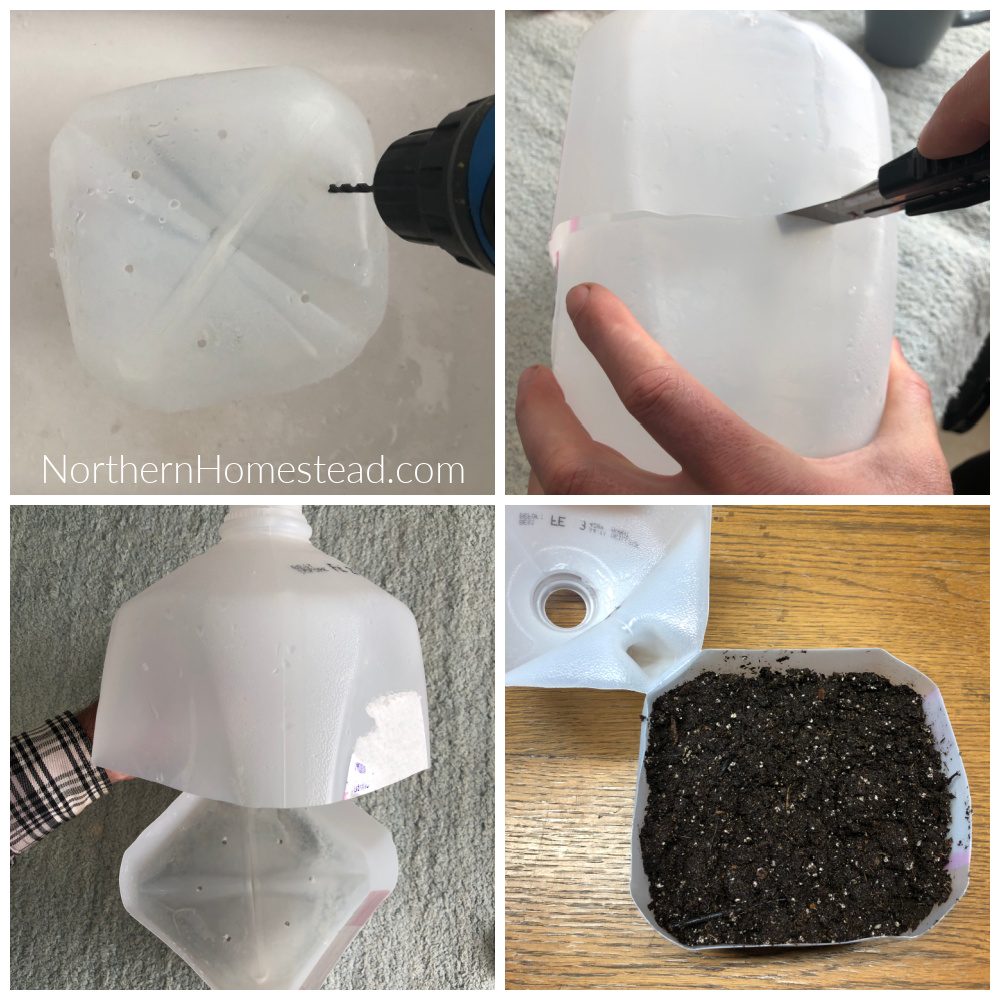
Translucent containers, such as one-gallon milk and water jugs or vinegar jugs, can be used for winter sowing. However, any container can be used as long as it has drainage holes and an opening for ventilation. The recycled containers must also be clean.
In our example, we used plastic milk jugs. Make 10-12 holes at the bottom and lower sides in a clean container for drainage.
Now cut the jug just below the handle, leaving 1-2 inches by the handle to close and open the top. You want to have enough room for the roots to grow.
Soil for Winter sowing
Fill the container with light, well-draining soil. Do not use seed starter soil, as it usually lacks nutrients. Instead, choose a potting mix that contains fertilizer. For example, you can use Promix organic vegetable and herb mix soil to start seeds.
If you use a soil mix without fertilizer (read the labels), add compost about 1/3 by volume. This is important because, unlike with indoor seed starting, we will not regularly transplant or water the seedlings. The seedlings need nutrients to grow on their own.
Water the soil throughout and let it drain. You are ready to plant now.
Planting the container greenhouse
Plant the seeds as usual, reading the label of the seed package. Most seeds need to be planted about three times their size deep.
If using very small seeds, sprinkle them on top and cover them lightly with some soil. Push the soil down lightly to ensure the seeds are in contact with the soil.
Do not overplant. Remember that these seedlings will be in the container until you plant them in the garden. Generally, they will be smaller than your usual seedlings started indoors. However, they still need some space to grow healthy roots.
Label the container so you know what is inside. Labeling inside the container also seems to work well since the outer surface will be exposed to the elements. Use a permanent marker that will last.
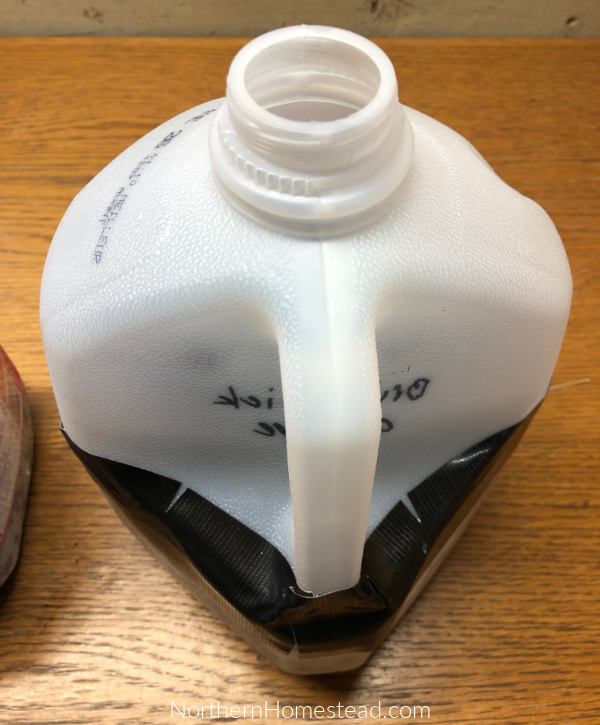
After planting, close the jugs and seal them with duct tape. We want to keep all the moisture in and prevent wind or airflow in the container. Only the lid is left open.
Bring the winter sowing container outside
Now, it is time for the winter part of the sowing system. In our first experiment, we placed the containers on the south side of our house. A few days later, we got snow, more snow, and heavy frost—too cold for my liking. But I wanted to try winter sowing in zone 3, so we did not pamper the seedlings.
I also had all the containers in a water-tight box, which I would not recommend.
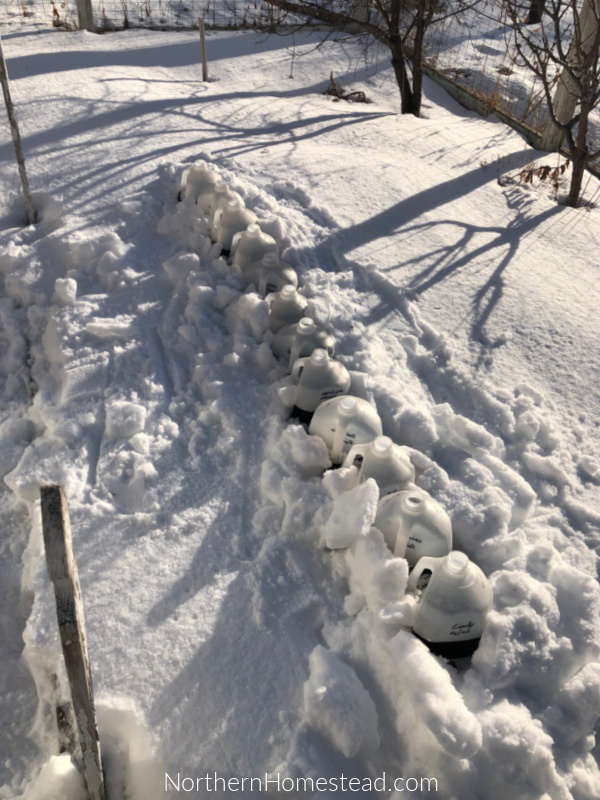
Instead, bring the containers out into the garden to a snowy location. If you can, give them a sunny but somewhat sheltered location from the wind. Place them into the snow so the snow gives some temperature stability and insulation.
If there is no snow and the night and day temperatures fluctuate, you can either cover the containers for the night with a protective blanket or bring them in. This will help speed up germination and protect young seedlings. Protecting them is a must, especially if you are trying to start warm-weather seeds.
Frankie-Lou Fuller, who loves winter sowing in zone 3, has another great tip for a no-snow situation: Make a protective wall around the container greenhouses, using containers that are filled halfway with water. This helps keep the temperature somewhat more stable, prevents overheating during the day, and keeps the plants from being totally exposed at night.

Again, for seeds that need warmth for germination, like onions or all summer crops, it is advisable to keep the jars indoors after planting. The jars do not need light, just warm temperatures. Once they germinate, get them used to the outdoors. Bring in summer crops during cold spells. Read more about starting seeds without grow lights here.
Seedlings care in winter sowing
Once the seedlings are up and growing, they will need some care. Now, in my first trial, I did not do anything except rescue them a couple of times from drowning. If you do not keep them in a trey, that will not happen.
As the seedlings grow, they will need water. You will know if they need water by lifting the containers. A dry container will feel very light.

Water from below by placing the jugs into a tray with water. They will soak up the water.
The winter-sowed seedlings will be pretty hardy, but if you are growing a frost-sensitive plant and a sudden deep freeze is imminent, you should bring them indoors.
Note, that protection is not needed for hardy seeds before the seeds germinate. It would only mess up the natural timing for germination (the whole idea behind winter sowing). If we get a spring blizzard, that’s when we want to step in.
Moving the containers in and out during unusual cold spells will help ensure more constant growth. If you have a greenhouse, keeping the seedlings in it overnight or in bad weather is a great way to combine winter sowing with greenhouse growing.
Later in the season, overheating might be an issue on sunny days. Spring sun can be very intense. After the snow has melted, a location with some protection from the afternoon sun is a good idea for the growing seedlings. In a greenhouse, the containers can be opened later in the season.
Hardening off plants in winter sowing
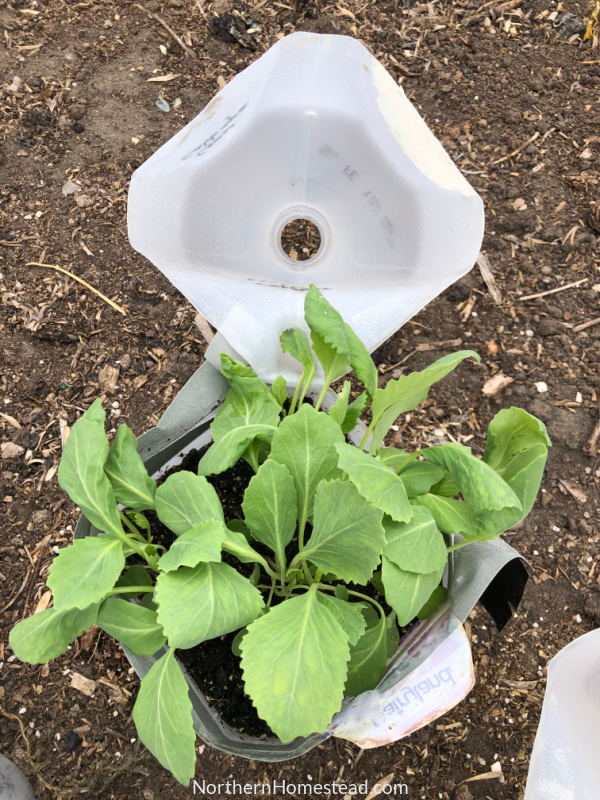
The plants in a milk jug container are not used to direct sunlight or air movement. They might become very weak seedlings if you leave them closed for too long.
About a week before planting seedlings in the garden, open the containers. Start that process in a shady, sheltered location. Slowly introduce them to sunlight and wind. Covering at first with fleece is a good idea. After that, they are ready to be planted and grow into healthy plants. Note that hardy seedlings can be planted out before the last frost date and heat-loving plants after. Find a schedule here.
The planting out is the same as planting multiple seedlings from one pot. Here are the eight steps.
If you want to learn more about winter gardening, here are some inspiring books:
Do not miss a thing! Subscribe to Northern Homestead and follow us on Instagram, Facebook, or Pinterest for the latest updates.

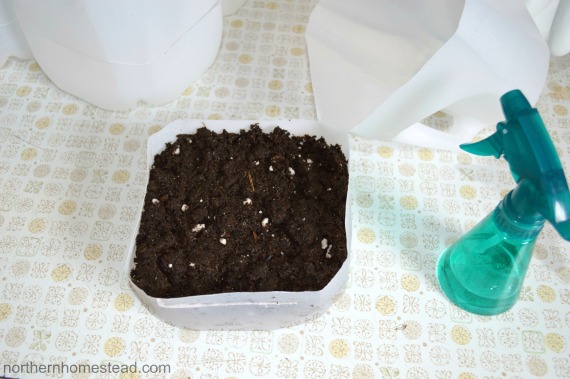
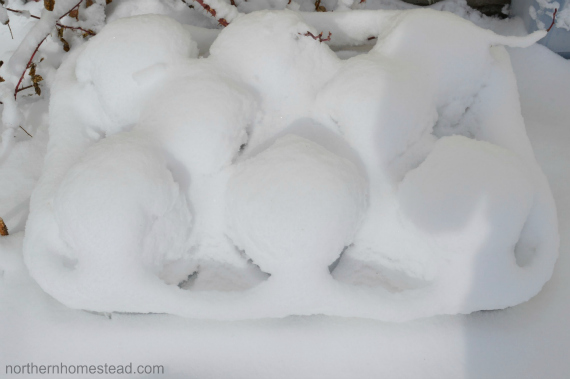



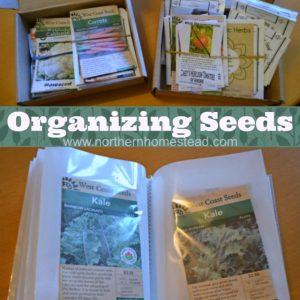
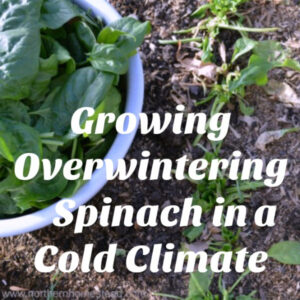
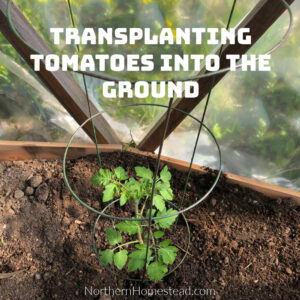
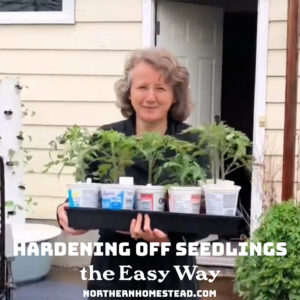
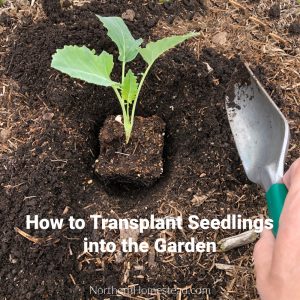
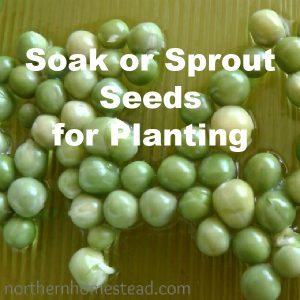
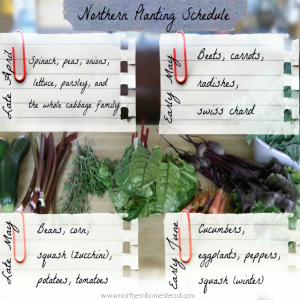
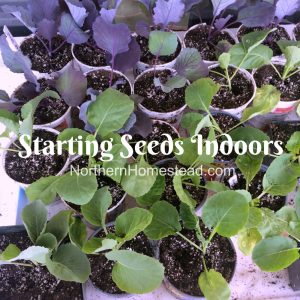
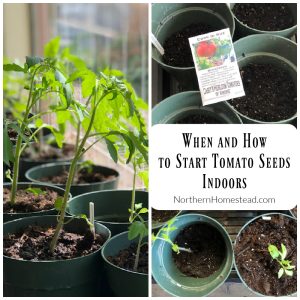
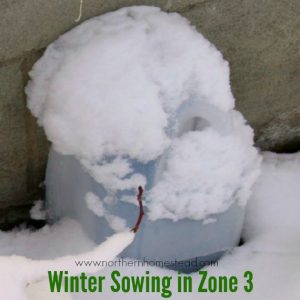

We winter sowed a couple years ago and it was great. I wish we would have doe it this year 🙁 It was too cold to even go outside most days. I am so glad it is over!!
Yes this is a cold winter, and a cold spring so far. Maybe not the best year for me to try winter sowing. Glad to hear it worked for you in the past.
I have been doing this for a few years now and have always had GREAT success!! My only problem is that I usually don’t put them out until the end of March just because I don’t get my butt in gear! I learned it from a gardening class and she recommended to do it in mid to late February. I do a lot of tomatoes and peppers and I swear I have had every seed germinate. I am also in zone 3, by the way.
Thank you for sharing Becky! This is very interesting. I only start winter crops, not tomatoes and peppers. I am afraid they would freeze. Great to hear that it works for them too.
I am a huge advocate for winter sowing. I’ve had great luck here in zone 5. Neat tip from my husband (while watching me chop up milk cartons with a paring knife): Fill the cartons with water and let it freeze outside, then cut and drill. It’s much more stable a surface to work with.
That is a great tip, thank you Jessica! Great to hear also that it works in Zine 5. We will see how it is in Zone 3.
No experience with this type of planting for me….I have not heard of this kind. Let us know how the turn out!
I heard about it the first time this winter, so it is new to me to. Will keep you posted.
Great advice Anna – I don’t have that kind of winter, but it’s interesting to learn 🙂
My winter sowing has been a huge success for the most part. I learned this method from your previous blog post about it a few months ago. I did my first sowing in early Feb. I am now just waiting to be able to put some plants into the ground and into outdoor pots. We had snow and ice but those milk jug’s kept the plants growing, will definitely utilize this method again.
Oh good to hear! Lets hope it works good for me too. It sure would be good, such an easy way to start seeds.
I hope to get some pictures posted soon as a follow up to the blog post I did about it. Some of our tomatoes FINALLY sprouted in the last few days. It took them about 3 weeks.
Looking forward to see them.
Interesting! I would have never thought that these would grow in the midst of so much snow…but I don’t know much about snow LOL I’m interested to see how this works out!
Well, we will see. Hopefully I can see some green in there sometimes soon 🙂
We’re not as far north as you are so, good on ya!!! We can usually get by with planting cold sturdy crops and using hort fabric or a hoophouse/cold frame set up. I like the simplicity of recycled materials, though. In fact, I just killed my Swiss chard transplants because I failed to do something similar during our surprise (ha! I knew it was coming in my bones!) snow and they keeled over. All my fancy garden stuff is packed for our move. Ah, well – that’s how it goes!
We all learn through trial and error, don’t we.
I do this successfully in Can zone 4. I don’t think the winter cold makes much difference as the seeds stay dormant until conditions improve. In fact, I always make sure it’s not a warm spell when I set them out so they don’t break dormancy long before their time. Not every seed germinates, and some things never germinate at all, so I would never use precious seeds this way, but it’s a great way to get very sturdy young plants quite early in the season. I use Trudi’s hunk o’ seedlings method (sow thickly, then break off a “hunk” off seedlings instead of separating individual plants) and it works very well to get lush growth quickly in the garden.
Thank you for sharing, Bev! So if my seeds do not germinate, it might be because I did not plant enough of them. Well we will see.
Living in zone 8, I don’t have to be concerned about winter sowing, but I do love to read about it and to see the pictures. I learn so much from your posts!
Thank you Alli! I so appreciate faithful readers no matter from what growing zone!
Can you describe what you were sowing? I am in the same zone and would love to try this next winter!
Cabbage, broccoli and swiss chard germinated the best. Dill, salad and celery did ok. So the hardier the plant, the better it works. I really liked it. Happy gardening!
Thanks for the info on winter sowing. I live in zone 2 in interior Alaska and will definitely try this this spring. One question: what do you mean when you say to duct tape the containers closed? Also, do you think it is rougher for the seedlings to be in a greenhouse where they will get warm day time temps and potentially subzero night temps (as compared to being outdoors in beds or containers)?
Jenny thank you for your questions. Duct tape the containers so they stay closed so wind and snow cant get to the plants. Just a tape all around the cut. Does that make sense?
I am not sure on the greenhouse. I could imagine it would be harder on the seedlings to be in the greenhouse. Maybe just use the greenhouse as an extra shelter for especially cold times (blizzards), we get does even in spring.
I want to know that too, because hubby built me a 6×10 greenhouse to start seedlings in and I am itching to get started, so I’m thinking of winter sowing. I winter-sowed a bunch of stuff a few years ago (zone 3) and it was my best gardening year ever. I’m just concerned about the heat factor in the greenhouse, which is placed strategically to catch as much sunlight and warmth as possible. I am also wondering if I do winter saw in the greenhouse if I could dispense with the jugs and just put regular seedling pots out. 🙂
I have started seeds in the greenhouse as early as March, direct in the ground. So starting them in pots with a cover for protection should work great. I just never have, since I also have the option of the indoor sunroom.
I’m also trying this method in zone 3 this year.
I had a setback – I put my jugs on a bench and they got blown over a few days ago. I’ve resettled the dirt and moved them to amore sheltered spot…but I have no idea if anything will germinate.
A friend just shared with me, she has hers in her basement, they grow quicker this way. I thought it was a great way to trick our Alberta weather ;).
In the winter-sowed garden I did a few years ago LOTS of stuff blew over and they still produced fine. 🙂
It is amazing how hardy those plants are, right. Glad it worked so well.
Winter sowing is on my list of things to try. I do a variation of this by planting cold hardy seeds in my greenhouse around the end of February.
It is a great way to start seeds if you do not have indoor room for seed starting. I have never started that early in a greenhouse. Happy it works for you.
So maybe I missed it but which seeds did you have success with? We’re there any that did not work?
There was a link to the update on my first try.
Last spring, cold weather crops did well. I moved the onions for a while indoors, not that they are not cold hardy, but they need warm themperature to germinate. We got a great harvest.